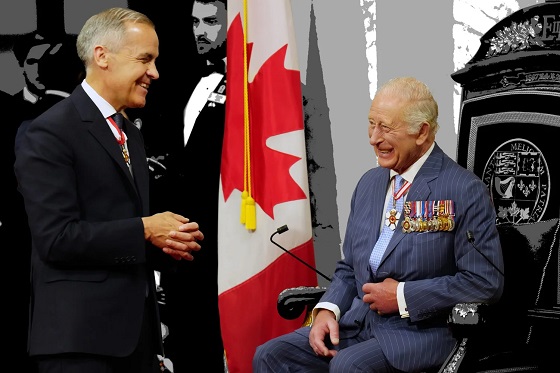Alberta
The way forward for energy development? Cenovus commits to building hundreds of homes in communities closest to their oil sands operations

From Cenovus Energy
Our Indigenous Housing program, the largest community investment initiative in Cenovus’s history, is aimed at addressing one of the most pressing issues facing Indigenous communities in Canada – the lack of adequate housing that is forcing many families to live in overcrowded and unsafe conditions.
The program involves a plan to commit $10 million per year for at least five years to build much-needed new homes in six First Nations and Métis communities closest to our oil sands operations in northern Alberta, with the potential to extend the project to 10 years. We see this initiative as an important way to contribute to reconciliation with Indigenous peoples.
We also plan to work with the communities to develop training programs, so that local residents can participate in the building and maintenance of the new homes.
The communities that are part of this program are:
- Beaver Lake Cree Nation
- Chard Métis (Local 218)
- Chipewyan Prairie Dene First Nation
- Cold Lake First Nations
- Conklin Métis (Local 193)
- Heart Lake First Nation
More information including comments from the surrounding communities
Cenovus to help address Indigenous housing crisis in northern Alberta
Project aims to provide about 200 new homes as well as jobs and training opportunities
Cenovus Energy Inc. has launched a major initiative aimed at addressing one of the most pressing issues facing Indigenous communities in Canada – the lack of adequate housing that is forcing many families to live in overcrowded and unsafe conditions. Cenovus is committing $10 million per year for five years to build much-needed new homes in six First Nations and Métis communities closest to its oil sands operations in northern Alberta, with the potential to extend the project to 10 years. The company sees this initiative as an important way to contribute to reconciliation with Indigenous peoples.
“Investing in Indigenous communities near our operations and ensuring they share in the benefits of resource development has always been part of how we do business. Today, we see an opportunity to step up and do more,” said Alex Pourbaix, Cenovus President & Chief Executive Officer. “We can’t solve the Indigenous housing crisis by ourselves, but through this initiative, we have the opportunity to significantly improve the lives of many families currently living in overcrowded and unsafe conditions.”
Developed as part of Cenovus’s recent 10th anniversary celebration, the housing initiative is the single largest community investment in the company’s history. It’s a testament to the strong positive relationships Cenovus has built over many years working with Indigenous communities near its Christina Lake and Foster Creek oil sands projects. Cenovus has met with leaders from Beaver Lake Cree Nation, Chard Métis (Local 218), Chipewyan Prairie Dene First Nation, Cold Lake First Nations, Conklin Métis (Local 193) and Heart Lake First Nation to begin planning the implementation of the housing program starting this year.
Cenovus plans to work with leaders from the six communities to determine the most effective ways of delivering new homes based on the specific needs of each community. It’s anticipated the communities will be able to build about 200 new houses in total over five years. Cenovus will also work with the communities to develop training programs, so that local residents can participate in the building and maintenance of the new homes. This will potentially create valuable education and employment opportunities for them in the long term. Depending on the success of the initiative, including meeting Cenovus’s performance expectations, the company may consider extending the program to 10 years with a total investment amount of $100 million.
“In addition to creating training and employment opportunities and funding the construction of new houses, Cenovus will also work with communities to raise awareness about the Indigenous housing shortage and help advocate for solutions,” said Pourbaix. “Communities have done an admirable job in managing their housing with limited resources. But this is a complex issue that will require new ideas and collaboration among many stakeholders. We hope to inspire other companies, governments and organizations to get involved.”
Separately, Cenovus has engaged its Indigenous Inclusion Advisory Committee, created in 2017 and comprised of senior leaders from various company functions, to help increase Indigenous inclusion in the company’s business. Since its inception in 2009, Cenovus has signed nine long-term benefits agreements with Indigenous communities near its oil sands operations and spent almost $3 billion with Indigenous owned and operated businesses. On January 9, 2020, Cenovus announced ambitious new targets in four environmental, social and governance (ESG) focus areas, including Indigenous engagement, climate & greenhouse gas emissions, land & wildlife, and water stewardship. A significant element of the Indigenous engagement ESG target commits Cenovus to spend at least an additional $1.5 billion with Indigenous businesses through 2030. Cenovus also continues to provide scholarships to Indigenous youth who are pursuing a full-time degree, diploma or certified trade program. More than 190 scholarships have been awarded since the Indigenous scholarship program started in 2013.
Shirley Paradis, Councillor, Beaver Lake Cree Nation
“Beaver Lake Cree Nation has always had housing issues. We’re at a capacity where we are trying to keep up with families’ needs. The most crucial thing is understanding that we have help now. Cenovus is stepping forward and saying: ‘We’re here to help, how do we help your community?’ There is going to be a sigh of relief for us.”
Justin Herman, CEO, Chard Métis (Local 218)
“What I am taking away from Cenovus’s announcement about the new housing initiative – it’s absolutely amazing and groundbreaking, and I hope it sets a precedent for the rest of the industry to follow the lead of Cenovus. We are excited and honoured to be part of this housing initiative.”
Vern Janvier, Chief, Chipewyan Prairie Dene First Nation
“We’re getting to the point where we have two families living in one house, and in some cases three. On top of the houses that are in disrepair, we have demand for another 50 houses. That’s how it builds up on us. And that’s just our reserve.”
Roger Marten, Chief, Cold Lake First Nations
“We have about 3,000 band members and only 300 homes. So, the crisis is always there and is always ongoing. The relationship has always been a great one with Cenovus; they have always listened and try to do the best they can to help us along the way.”
Val Quintal, Board member, Conklin Resource Development Advisory Committee, representing Conklin Métis (Local 193)
“Housing is a critical need for Conklin, and we are so pleased that Cenovus has come forward to help our community address this issue.”
Curtis Monias, Chief, Heart Lake First Nation
“I am really excited for Heart Lake. I look forward to working with all the surrounding communities, with industry, and I’m excited to build homes back home for my people.”
Alberta
The Canadian Energy Centre’s biggest stories of 2025

From the Canadian Energy Centre
Canada’s energy landscape changed significantly in 2025, with mounting U.S. economic pressures reinforcing the central role oil and gas can play in safeguarding the country’s independence.
Here are the Canadian Energy Centre’s top five most-viewed stories of the year.
5. Alberta’s massive oil and gas reserves keep growing – here’s why

The Northern Lights, aurora borealis, make an appearance over pumpjacks near Cremona, Alta., Thursday, Oct. 10, 2024. CP Images photo
Analysis commissioned this spring by the Alberta Energy Regulator increased the province’s natural gas reserves by more than 400 per cent, bumping Canada into the global top 10.
Even with record production, Alberta’s oil reserves – already fourth in the world – also increased by seven billion barrels.
According to McDaniel & Associates, which conducted the report, these reserves are likely to become increasingly important as global demand continues to rise and there is limited production growth from other sources, including the United States.
4. Canada’s pipeline builders ready to get to work
Canada could be on the cusp of a “golden age” for building major energy projects, said Kevin O’Donnell, executive director of the Mississauga, Ont.-based Pipe Line Contractors Association of Canada.
That eagerness is shared by the Edmonton-based Progressive Contractors Association of Canada (PCA), which launched a “Let’s Get Building” advocacy campaign urging all Canadian politicians to focus on getting major projects built.
“The sooner these nation-building projects get underway, the sooner Canadians reap the rewards through new trading partnerships, good jobs and a more stable economy,” said PCA chief executive Paul de Jong.
3. New Canadian oil and gas pipelines a $38 billion missed opportunity, says Montreal Economic Institute

Steel pipe in storage for the Trans Mountain Pipeline expansion in 2022. Photo courtesy Trans Mountain Corporation
In March, a report by the Montreal Economic Institute (MEI) underscored the economic opportunity of Canada building new pipeline export capacity.
MEI found that if the proposed Energy East and Gazoduq/GNL Quebec projects had been built, Canada would have been able to export $38 billion worth of oil and gas to non-U.S. destinations in 2024.
“We would be able to have more prosperity for Canada, more revenue for governments because they collect royalties that go to government programs,” said MEI senior policy analyst Gabriel Giguère.
“I believe everybody’s winning with these kinds of infrastructure projects.”
2. Keyera ‘Canadianizes’ natural gas liquids with $5.15 billion acquisition

Keyera Corp.’s natural gas liquids facilities in Fort Saskatchewan, Alta. Photo courtesy Keyera Corp.
In June, Keyera Corp. announced a $5.15 billion deal to acquire the majority of Plains American Pipelines LLP’s Canadian natural gas liquids (NGL) business, creating a cross-Canada NGL corridor that includes a storage hub in Sarnia, Ontario.
The acquisition will connect NGLs from the growing Montney and Duvernay plays in Alberta and B.C. to markets in central Canada and the eastern U.S. seaboard.
“Having a Canadian source for natural gas would be our preference,” said Sarnia mayor Mike Bradley.
“We see Keyera’s acquisition as strengthening our region as an energy hub.”
1. Explained: Why Canadian oil is so important to the United States

Enbridge’s Cheecham Terminal near Fort McMurray, Alberta is a key oil storage hub that moves light and heavy crude along the Enbridge network. Photo courtesy Enbridge
The United States has become the world’s largest oil producer, but its reliance on oil imports from Canada has never been higher.
Many refineries in the United States are specifically designed to process heavy oil, primarily in the U.S. Midwest and U.S. Gulf Coast.
According to the Alberta Petroleum Marketing Commission, the top five U.S. refineries running the most Alberta crude are:
- Marathon Petroleum, Robinson, Illinois (100% Alberta crude)
- Exxon Mobil, Joliet, Illinois (96% Alberta crude)
- CHS Inc., Laurel, Montana (95% Alberta crude)
- Phillips 66, Billings, Montana (92% Alberta crude)
- Citgo, Lemont, Illinois (78% Alberta crude)
Alberta
Alberta Next Panel calls for less Ottawa—and it could pay off

From the Fraser Institute
By Tegan Hill
Last Friday, less than a week before Christmas, the Smith government quietly released the final report from its Alberta Next Panel, which assessed Alberta’s role in Canada. Among other things, the panel recommends that the federal government transfer some of its tax revenue to provincial governments so they can assume more control over the delivery of provincial services. Based on Canada’s experience in the 1990s, this plan could deliver real benefits for Albertans and all Canadians.
Federations such as Canada typically work best when governments stick to their constitutional lanes. Indeed, one of the benefits of being a federalist country is that different levels of government assume responsibility for programs they’re best suited to deliver. For example, it’s logical that the federal government handle national defence, while provincial governments are typically best positioned to understand and address the unique health-care and education needs of their citizens.
But there’s currently a mismatch between the share of taxes the provinces collect and the cost of delivering provincial responsibilities (e.g. health care, education, childcare, and social services). As such, Ottawa uses transfers—including the Canada Health Transfer (CHT)—to financially support the provinces in their areas of responsibility. But these funds come with conditions.
Consider health care. To receive CHT payments from Ottawa, provinces must abide by the Canada Health Act, which effectively prevents the provinces from experimenting with new ways of delivering and financing health care—including policies that are successful in other universal health-care countries. Given Canada’s health-care system is one of the developed world’s most expensive universal systems, yet Canadians face some of the longest wait times for physicians and worst access to medical technology (e.g. MRIs) and hospital beds, these restrictions limit badly needed innovation and hurt patients.
To give the provinces more flexibility, the Alberta Next Panel suggests the federal government shift tax points (and transfer GST) to the provinces to better align provincial revenues with provincial responsibilities while eliminating “strings” attached to such federal transfers. In other words, Ottawa would transfer a portion of its tax revenues from the federal income tax and federal sales tax to the provincial government so they have funds to experiment with what works best for their citizens, without conditions on how that money can be used.
According to the Alberta Next Panel poll, at least in Alberta, a majority of citizens support this type of provincial autonomy in delivering provincial programs—and again, it’s paid off before.
In the 1990s, amid a fiscal crisis (greater in scale, but not dissimilar to the one Ottawa faces today), the federal government reduced welfare and social assistance transfers to the provinces while simultaneously removing most of the “strings” attached to these dollars. These reforms allowed the provinces to introduce work incentives, for example, which would have previously triggered a reduction in federal transfers. The change to federal transfers sparked a wave of reforms as the provinces experimented with new ways to improve their welfare programs, and ultimately led to significant innovation that reduced welfare dependency from a high of 3.1 million in 1994 to a low of 1.6 million in 2008, while also reducing government spending on social assistance.
The Smith government’s Alberta Next Panel wants the federal government to transfer some of its tax revenues to the provinces and reduce restrictions on provincial program delivery. As Canada’s experience in the 1990s shows, this could spur real innovation that ultimately improves services for Albertans and all Canadians.
-

 Business13 hours ago
Business13 hours agoICYMI: Largest fraud in US history? Independent Journalist visits numerous daycare centres with no children, revealing massive scam
-

 Daily Caller2 days ago
Daily Caller2 days agoUS Halts Construction of Five Offshore Wind Projects Due To National Security
-

 Daily Caller2 days ago
Daily Caller2 days agoWhile Western Nations Cling to Energy Transition, Pragmatic Nations Produce Energy and Wealth
-

 Alberta2 days ago
Alberta2 days agoAlberta Next Panel calls for less Ottawa—and it could pay off
-

 Bruce Dowbiggin2 days ago
Bruce Dowbiggin2 days agoBe Careful What You Wish For In 2026: Mark Carney With A Majority
-

 Business2 days ago
Business2 days agoMainstream media missing in action as YouTuber blows lid off massive taxpayer fraud
-

 Energy2 days ago
Energy2 days agoRulings could affect energy prices everywhere: Climate activists v. the energy industry in 2026
-

 International2 days ago
International2 days agoChina Stages Massive Live-Fire Encirclement Drill Around Taiwan as Washington and Japan Fortify








